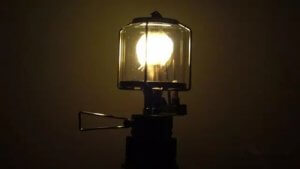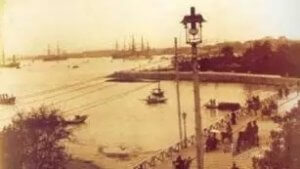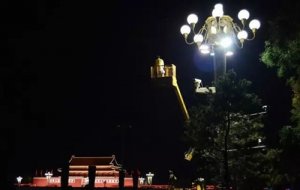The history of the development of street lamps is an outdoor pursuit of a bright history of entrepreneurship and a history of the exploration of a better life for mankind. Lighting pole history was started together with human street lighting.
15th century London – the earliest origin of street lamps
In 1417, in order to brighten the dark nights of London, London Mayor Henry Barton issued an order to hang lighting fixtures outdoors. Later, his initiative was supported by the French.
16th Century Paris – Street Lighting Act
At the beginning of the 16th century, lighting fixtures had to be installed outside the windows of the residential buildings in Paris. At Louis XIV, many street lights appeared on the streets of Paris. In 1667, Louis XIV, known as the “Sun King”, officially promulgated the Urban Road Lighting Act. Legend has it that it was because of the promulgation of this decree that the rule of Louis XIV was called the “Bright Age” in French history.
1807 UK gas lamps

The initial road light was weak because the street lights used ordinary candles and oil. Later, after switching to kerosene, the brightness of the street lamp was significantly improved, and the real revolution of the street lamp was after the appearance of the gas lamp. But initially, its inventor, the Englishman William Murdoch, was ridiculed. In a letter to a friend, Walter Scott said that there was a madman who used a street lamp that was “black smoke” to illuminate the night in London. Although the Murdoch street lights have caused a lot of controversy, the advantages of this street lamp can not be ignored. In 1807, the new streetlight was installed on Pomeranian Street and quickly became popular in European capitals.
1843 Shanghai kerosene lamp
In 1843, the first street lamp appeared on the streets of Shanghai, China. Although it was ignited by kerosene.
1873 electric lights
The history of human electricity lighting is closely linked to the names of the two inventors, the Russian Alexandre Lotkin and the American Thomas Edison. In 1873, Alexandria Lodkin received the Lomonosov Prize from the Petersburg Academy of Sciences for designing incandescent bulbs. Soon, this light bulb was applied to the lighting of the Peterborough Naval Building. A few years later, Thomas Edison improved the bulb to make it lighter and cheaper to produce. With the emergence of such a large number of light bulbs, the steam lamp quickly withdrew from the road lighting, and the electric light was replaced, which became an important tool for urban outdoor lighting at night.

Until 1879, Shanghai Ponte Dock finally illuminated China’s first electric light, equipped with a 10-horsepower internal combustion engine generating unit, equivalent to the power of a walking tractor. The initial road light is equipped with a knife switch on each pole. It still needs to be manually turned on and off every day. After 3 years, it is replaced by a plurality of street lamps. This type of street lamp is used in the 20th century in various cities across the country.

